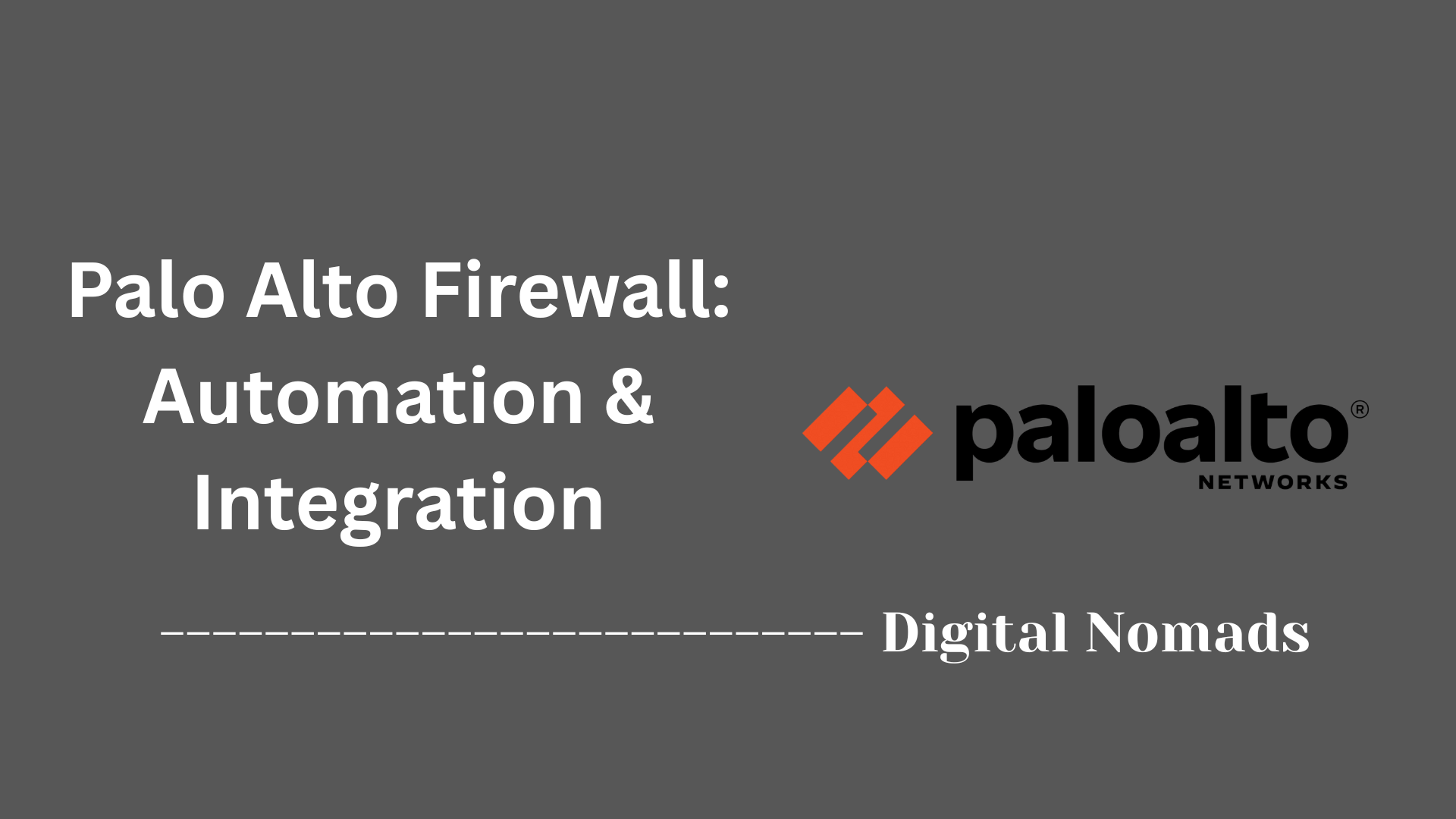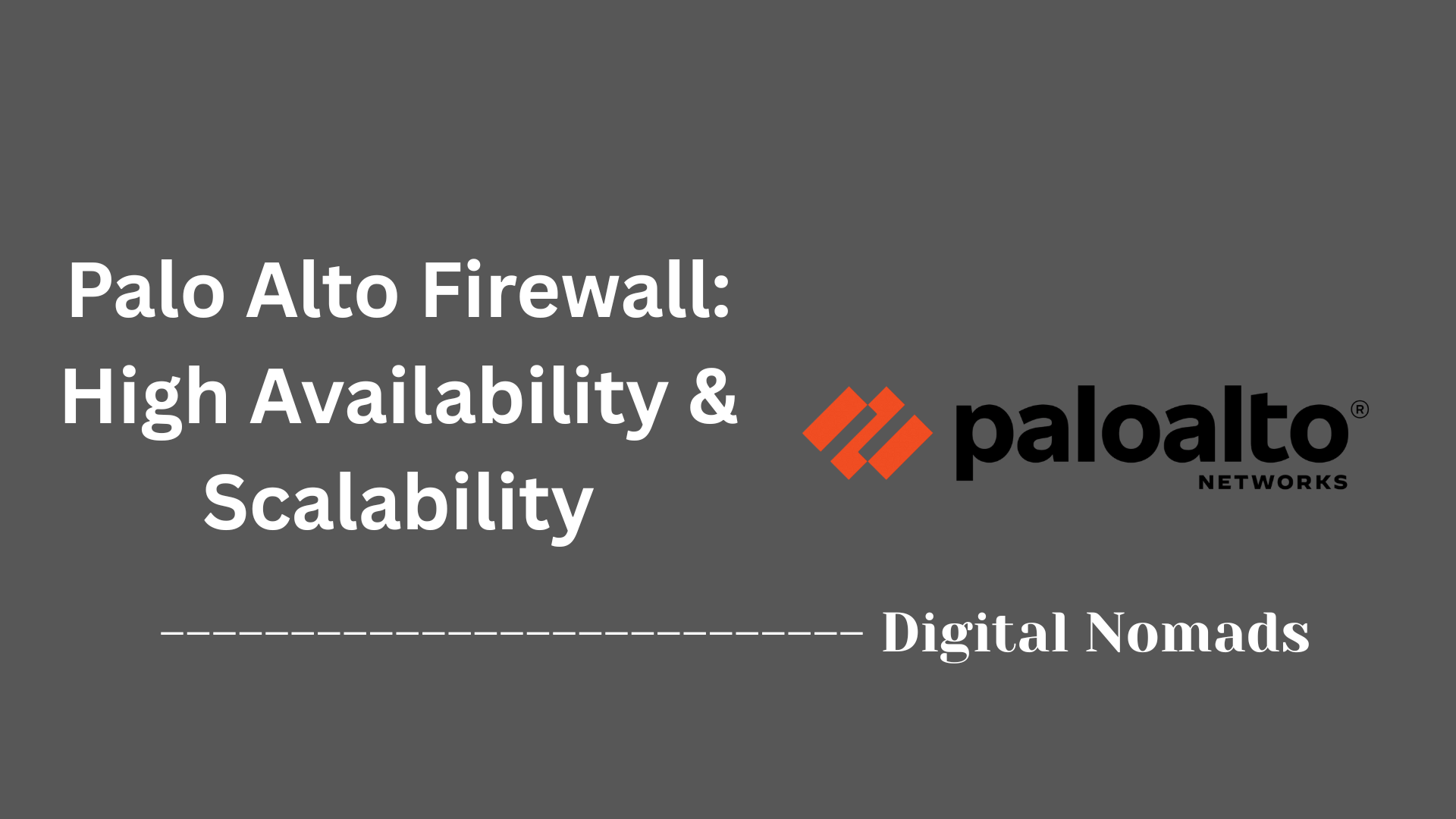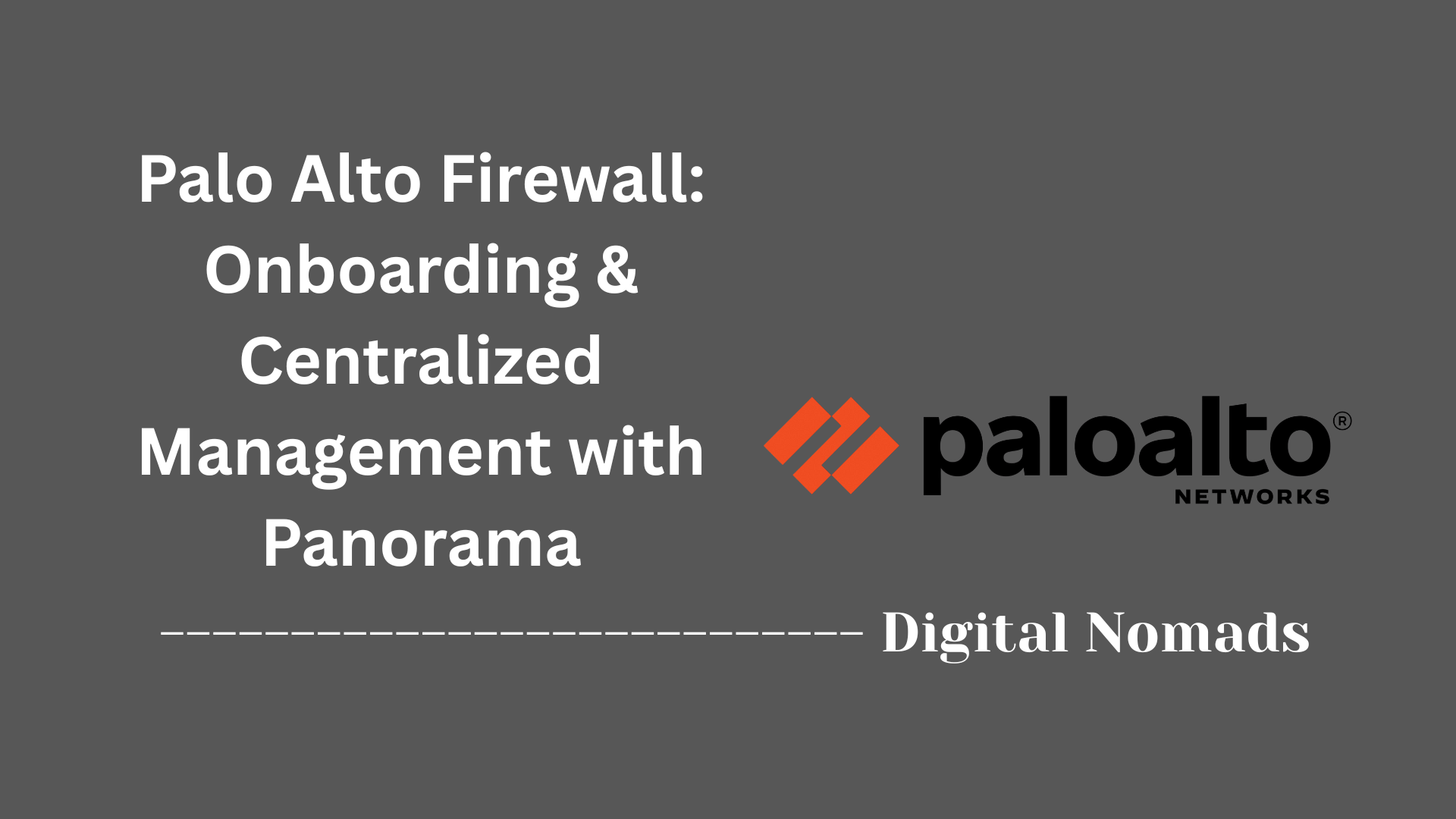Table of Contents
- Overview
- Key Features of Advanced Threat Prevention
- Security Services Portfolio Overview
- Unique Technical Advantages
- Performance Metrics
- Deployment and Integration
- Recent Enhancements
- Conclusion
Overview: Palo Alto Advanced Threat Prevention and Security Services
What Is It?
Palo Alto Advanced Threat Prevention (ATP) and Security Services is a comprehensive suite of network security solutions designed to protect organizations from sophisticated cyber threats. This platform leverages artificial intelligence (AI), machine learning (ML), and cloud-based threat intelligence to detect, prevent, and respond to both known and unknown cyberattacks in real time. It is integrated into Palo Alto Networks’ next-generation firewalls and cloud security offerings, providing layered protection across on-premises, cloud, and hybrid environments.
Why You Need to Know About It
- Evolving Threat Landscape: Cyber threats are becoming more advanced, leveraging zero-day vulnerabilities, evasive malware, and targeted attacks that bypass traditional security measures. ATP is specifically designed to address these modern threats.
- Regulatory Compliance: Many industries require robust security controls to comply with regulations such as GDPR, HIPAA, and PCI DSS. Palo Alto’s services help organizations meet these requirements by providing comprehensive threat detection and reporting.
- Business Continuity: Security breaches can lead to downtime, data loss, and reputational damage. ATP minimizes these risks by proactively blocking threats before they can impact operations.
- Unified Security Management: With integrated threat intelligence and centralized management, organizations can streamline their security operations, reduce complexity, and improve response times.
How It Works
- Inline Threat Prevention: The platform uses AI-powered deep learning models to analyze network traffic in real time, identifying and blocking threats such as malware, exploits, and command-and-control (C2) activity before they reach endpoints.
- Signature and Behavior-Based Detection: ATP combines traditional signature-based detection with advanced behavioral analysis to identify both known and unknown threats, including zero-day attacks.
- Cloud-Delivered Updates: Threat intelligence is continuously updated from Palo Alto’s global research teams and threat intelligence cloud, ensuring defenses are always current against the latest attack techniques.
- Single-Pass Architecture: Security functions such as intrusion prevention, malware analysis, and URL filtering are processed in a single scan, reducing latency and maintaining high network performance.
- Automated Response: The system can automatically quarantine threats, enforce security policies, and trigger incident response workflows, leveraging integrations with security orchestration tools for rapid containment.
By combining these capabilities, Palo Alto Advanced Threat Prevention and Security Services provide organizations with a proactive, intelligent, and scalable defense against the full spectrum of cyber threats.
Key Features of Advanced Threat Prevention
Palo Alto Advanced Threat Prevention (ATP) offers a suite of powerful features that help organizations detect, block, and respond to advanced cyber threats. Here’s a step-by-step look at its core capabilities:
- Deep Packet Inspection (DPI) & Content Inspection: Examines all layers of network traffic to identify and block threats that traditional methods might miss.
- Single-Pass Architecture: Processes multiple security functions in a single scan, reducing latency and boosting network performance.
- Application Identification (App-ID): Recognizes and controls applications regardless of port, protocol, or encryption, providing granular visibility and control.
- Threat Intelligence Integration: Continuously updates defenses using real-time threat intelligence from Palo Alto’s global cloud and research teams.
- WildFire Advanced Malware Analysis: Analyzes suspicious files and links in a sandbox to detect and stop zero-day and advanced malware.
- URL Filtering & Safe Search: Blocks access to malicious or inappropriate websites using real-time categorization and intelligence.
- User-ID (Identity Awareness): Enables policies based on user identity, device, or location for context-aware security.
- Decryption & SSL Inspection: Inspects encrypted SSL/TLS traffic to uncover hidden threats while maintaining privacy controls.
- Advanced Intrusion Prevention System (IPS): Detects and blocks sophisticated network and application layer attacks using heuristic and protocol analysis.
- Zero-Day Attack Prevention: Uses inline AI and machine learning to identify and stop unknown exploits and evasive command-and-control (C2) traffic in real time.
- Custom Signature Support: Supports importing Snort and Suricata rules, allowing customized threat detection.
- Cloud Integration (Prisma & Cortex): Seamlessly connects with Palo Alto’s cloud-native and centralized security management platforms for end-to-end protection.
- Unified Threat Analysis: Performs all threat analysis in a single scan, streamlining security operations.
- Continuous Updates & Local Deep Learning: Receives frequent threat intelligence updates and uses local deep learning for rapid, on-device detection of new threats.
Security Services Portfolio Overview
Palo Alto Networks provides a comprehensive suite of security services that work together to deliver advanced protection across networks, users, and cloud environments. Here’s a step-by-step overview of the core services in the portfolio:
| Service | Description | Key Capabilities |
|---|---|---|
| Advanced Threat Prevention | Inline AI/ML-driven intrusion prevention, exploit and malware blocking, command-and-control (C2) detection. | Zero-day, C2, malware, and exploit protection |
| WildFire | Advanced malware analysis and sandboxing for files, URLs, and emails. | Zero-day malware detection, rapid signature updates |
| URL Filtering | Real-time, category-based filtering of web traffic to prevent access to malicious or inappropriate sites. | Phishing, drive-by download, and malicious URL prevention |
| DNS Security | Predictive analytics to disrupt DNS-based attacks and prevent data exfiltration. | C2, data theft, and domain fronting protection |
| User-ID | Identity-based policy enforcement for users, devices, and locations. | Context-aware security policies |
| SSL Decryption | Inspection of encrypted SSL/TLS traffic to uncover hidden threats. | Threat detection in encrypted sessions |
| Prisma Cloud Integration | Cloud-native security for hybrid and multi-cloud environments. | Cloud workload, container, and application security |
| Cortex Integration | Centralized SIEM and SOAR for event management and automated response. | Automated incident response, centralized visibility |
Each service is designed to address specific threat vectors and security needs, while working together to provide unified, end-to-end protection for modern organizations.
Unique Technical Advantages
Palo Alto Advanced Threat Prevention and Security Services stand out thanks to a set of innovative technical features that deliver superior protection and efficiency. Here’s a step-by-step breakdown of what makes their approach unique:
- Single-Pass Architecture: Processes all security functions—such as threat prevention, malware analysis, and URL filtering—in one scan, minimizing latency and optimizing network performance.
- App-ID Technology: Identifies applications based on signatures, heuristics, and behavioral analysis, regardless of port, protocol, or encryption, allowing precise control and visibility over more than 3,000 applications.
- Inline Deep Learning (LDL): Employs advanced local deep learning models directly on supported firewalls (PAN-OS 11.2+) for rapid, on-device detection and prevention of zero-day and evasive threats.
- Threat Intelligence Sharing: Distributes real-time threat intelligence across all Palo Alto platforms, ensuring consistent and up-to-date protection organization-wide.
- Custom Signature Support: Enables conversion and use of Snort and Suricata rules, allowing organizations to integrate custom threat intelligence feeds for enhanced detection.
- Unified Threat Analysis: Conducts all threat analyses in a single, integrated scan, reducing redundancies and streamlining security operations.
- Cloud-Delivered Updates: Continuously receives the latest threat intelligence, indicators, and protections from Palo Alto’s global research teams and Threat Intelligence Cloud.
- Seamless Cloud and On-Premises Integration: Supports deployment across hardware, virtual, and cloud-delivered firewalls, enabling consistent security in hybrid and multi-cloud environments.
Performance Metrics
Palo Alto Advanced Threat Prevention and Security Services are measured by their ability to block, detect, and respond to sophisticated cyber threats in real time. Here’s a step-by-step breakdown of key performance metrics that demonstrate the effectiveness of these solutions:
- Web-Based Cobalt Strike C2 Prevention: Blocks up to 96% of web-based Cobalt Strike command-and-control (C2) traffic, a common tool used in advanced attacks.
- Injection Attack Prevention: Prevents approximately 90% of injection attacks, including SQL injection and command injection attempts.
- Empire C2 Attack Prevention: Stops up to 98% of Empire C2 attacks, which are used for post-exploitation and lateral movement.
- Exploit Attempts Blocked: Blocks an average of 7.4 million exploit attempts per month, protecting against both known and unknown vulnerabilities.
- Total Threats Blocked Inline: Prevents 11.3 billion threats inline every day, ensuring threats are stopped before reaching endpoints.
- Never-Before-Seen Threats Blocked: Identifies and blocks 2.3 million never-before-seen threats inline per day, using AI and machine learning for zero-day detection.
These metrics reflect the platform’s real-world impact in defending organizations against a wide range of cyber threats, emphasizing both the scale and sophistication of Palo Alto’s security capabilities.
Deployment and Integration
Palo Alto Advanced Threat Prevention and Security Services are designed for flexible deployment and seamless integration across diverse IT environments. Here’s a step-by-step guide to how these solutions can be implemented and integrated:
- Flexible Deployment Options: Available as hardware appliances, virtual firewalls, and cloud-delivered services (Prisma Access), enabling protection for on-premises, cloud, and hybrid environments.
- Cloud-Native Security: Integrates with public cloud platforms (AWS, Azure, Google Cloud) and supports multi-cloud and hybrid-cloud deployments to secure workloads wherever they reside.
- Automated Incident Response: Leverages AI-driven automation and orchestration (e.g., Cortex XSOAR) to streamline incident response, enabling up to 80% of incidents to be handled automatically.
- Zero Trust Architecture Support: Implements “never trust, always verify” principles across users, devices, locations, and applications, supporting Zero Trust security models.
- Centralized Management: Provides unified policy management and visibility through Panorama and cloud-based management consoles, simplifying operations for distributed environments.
- Integration with Third-Party Tools: Supports APIs and connectors for integration with SIEM, SOAR, and ITSM solutions, enabling organizations to build custom workflows and enhance security operations.
- Continuous Threat Intelligence: Receives frequent updates from Palo Alto’s Threat Intelligence Cloud and Unit 42 research, ensuring defenses are always current.
- Scalable Architecture: Designed to scale from small businesses to large enterprises, supporting high availability and redundancy for mission-critical deployments.
By offering multiple deployment models and robust integration capabilities, Palo Alto ensures organizations can tailor their security posture to meet evolving business and regulatory requirements.
Recent Enhancements
Palo Alto Advanced Threat Prevention and Security Services are continually updated to address the latest cyber threats and improve operational efficiency. Here’s a step-by-step overview of the most recent enhancements:
- Exfiltration Shield: Introduces advanced protection against data exfiltration techniques, such as DNS relaying and data leakage via HTTP headers, using machine learning to detect and block suspicious outbound activity.
- Vulnerability Context in Reports: Enhances incident response by mapping detected exploits to specific CVEs (Common Vulnerabilities and Exposures), providing security teams with actionable intelligence and faster remediation.
- Expanded Service Regions: Adds new regional service endpoints to support compliance requirements and improve performance for global organizations.
- Local Deep Learning (LDL) Advancements: Expands the use of on-device deep learning for faster detection of zero-day and evasive threats, reducing reliance on cloud analysis and improving response times.
- Automated Policy Recommendations: Leverages AI to suggest and implement policy changes based on evolving threat intelligence and observed network behavior, reducing manual workload for security teams.
- Improved Integration with Cloud Services: Enhances compatibility and orchestration with leading cloud platforms and DevOps tools, streamlining security for hybrid and multi-cloud environments.
- Real-Time Threat Intelligence Updates: Increases the frequency and granularity of threat intelligence feeds, ensuring defenses are always up to date against the latest attack techniques.
These enhancements ensure that Palo Alto’s security platform remains at the forefront of threat prevention, delivering continuous innovation to meet the demands of modern cybersecurity.
Conclusion
Throughout this blog post, we’ve taken a comprehensive journey through the world of Palo Alto Firewall’s Advanced Threat Prevention and Security Services. Here’s a quick recap of what we’ve learned:
- Overview & Importance: We started by understanding what Palo Alto’s Advanced Threat Prevention is, why it’s crucial in today’s threat landscape, and how it leverages cutting-edge AI, machine learning, and cloud intelligence to keep organizations secure.
- Key Features: We explored the robust features that set this platform apart—such as deep packet inspection, single-pass architecture, application identification, and advanced malware analysis with WildFire.
- Security Services Portfolio: We broke down the full suite of security services, including URL filtering, DNS security, user identification, SSL decryption, and integrations with Prisma Cloud and Cortex.
- Unique Technical Advantages: We highlighted Palo Alto’s technical edge, including single-pass architecture, App-ID, inline deep learning, and seamless cloud integration.
- Performance Metrics: We reviewed impressive real-world metrics, from millions of threats blocked daily to high prevention rates for advanced attacks like Cobalt Strike and Empire C2.
- Deployment & Integration: We saw how flexible deployment options and centralized management make it easy to secure any environment—on-premises, in the cloud, or hybrid.
- Recent Enhancements: Finally, we looked at the latest innovations, such as Exfiltration Shield, enhanced vulnerability context, and automated policy recommendations, ensuring the platform stays ahead of evolving threats.
Key Takeaways:
Palo Alto’s Advanced Threat Prevention and Security Services offer a holistic, intelligent, and highly adaptable approach to cybersecurity. Whether you’re a small business or a global enterprise, these solutions provide the visibility, automation, and proactive defense needed to stay protected in an ever-changing digital world.
Thank you for joining us on this deep dive! If you have questions or want to learn more about implementing Palo Alto’s solutions in your organization, feel free to reach out or leave a comment below. Stay safe and secure!




